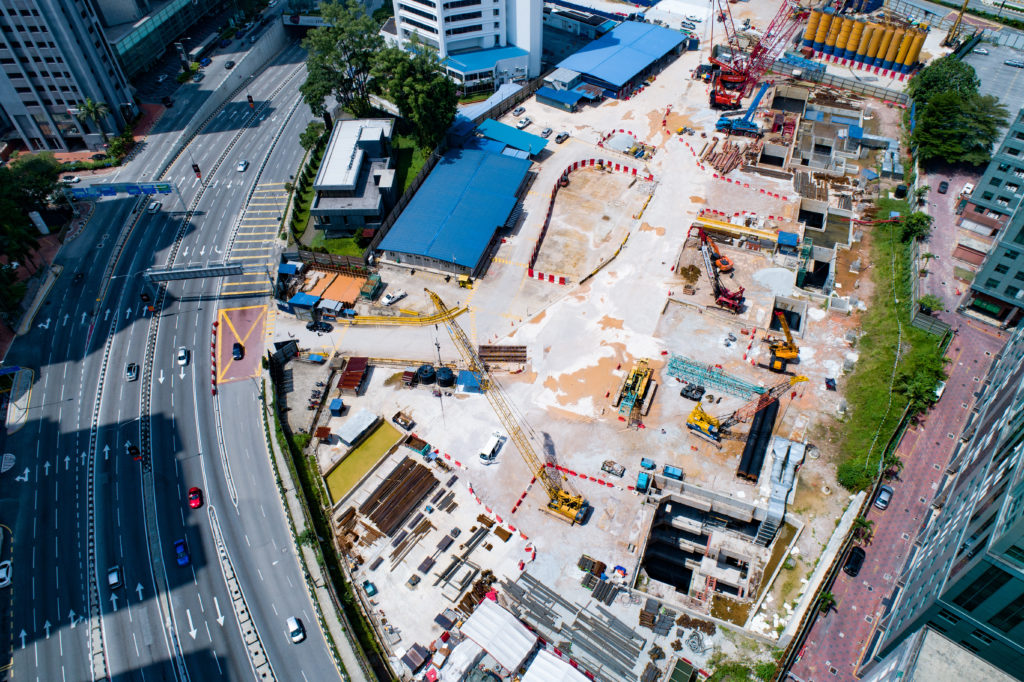A Breakthrough Despite Unexpected Challenges

The month of July marked a new beginning for our MRT Putrajaya Line (formerly known as the Sungai Buloh-Serdang-Putrajaya line). The MMC-Gamuda KVMRT (T) Sdn Bhd (MGKT) team, which is MRT Putrajaya Line’s tunnelling contractor successfully achieved the final breakthrough at the upcoming Ampang Park MRT station.
The machine weighed at 1,100-tonne had travelled for over 700m from its starting point at Conlay Station. During the Movement Control Order (MCO), the TBM machine finished the rest of its 200m journey with special approval from authorities.
This final breakthrough came with it’s own set of challenges as tunnelling work began in March 2018 at Bandar Malaysia North when Malaysia announced the first phase of the MCO.
Working with the MCO restrictions came with its challenges which put a halt in the supply chain, slowed down the labour force and threatened the project timelines. However, with stringent Covid-19 safety and hygiene procedures in place, the team managed to protect the well-being of our workforce while carrying out tunnelling activities.
Another one of the challenges was said to be the rather tricky geological terrain that the12 TBMs passed through 13.5km underground that journeyed across nine stations and two transitioning stations. The TBMs were deployed concurrently to ensure the January 2023 full opening deadline is met.
It is said that the Putrajaya Line underground alignment proved to be more challenging to design and build as compared to the Kajang Line (formerly known as Sungai Buloh-Kajang Line) alignment.
Dato’ Ir Wong Wai Ching, MMC-Gamuda’s Project Director for Putrajaya Line was quoted in The Star saying, “In contrast, the Putrajaya Line geology is a lot more complex. The tunnels are typically deeper; there are more structures, utilities and objects underground; and stations have to be built close to existing buildings.”
Ultimately, the sporadic changes of geological formations on the tunnel face and mixed-face conditions sped up the wear and tear of the TBM cutter head and induced the risk of ground settlement.
It also introduced tunnel face stability problems, made the conditioning of tunnelling much more challenging, and presented groundwater inflow into the worksite.
Dato’ Ir Wong also indicated that while preliminary geological studies showed that Putrajaya Line and Kajang Line consisted of similar karstic geology, the team experienced significantly more challenging ground conditions. These challenges were said to be virtually undetectable geological troughs and mixed-face conditions.
The tunnels for Putrajaya Line are also longer – 13.5km with 11 stations – compared to the Kajang Line’s 9.5km with seven stations; which meant the work scope was more extensive, and if delays occurred in one section; it is more than likely to affect others like a domino effect.
Thankfully with the team’s experience building the Kajang Line, the tunnelling team were able to refine the customised variable density TBMs from lessons learnt earlier andre-sequence some TBM drives to overcome challenges cropped up along the journey for Putrajaya Line.
All-in-all, the final MRT Putrajaya Line TBM breakthrough proved to be the most challenging by far. Despite geological, supply chain, productivity challenges amongst others, the team has pushed forward, with Dato Ir. Wong Wai Ching stating that these challenges have only brought us a wealth of knowledge, expertise and cutting-edge machinery making MGKT ready for more urban rail projects.

